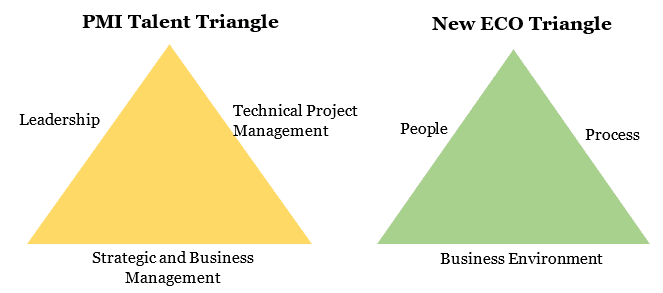 Projects come in all shapes and sizes. Some impact the entire enterprise while others may affect a single workshop. Some are disruptive while others are incremental. Projects can aim to improve processes, systems, tools and structures. But despite all the wonderful variety in the project world, there is one universal constant in terms of both impact and contribution to success: the people whose jobs will be affected and changed as a result of the project implementation. The people side of change sits squarely along the critical path to delivering value above and beyond specifications. Unfortunately, the people side of change is often the most overlooked, underserved, under-resourced and underfunded.
Projects come in all shapes and sizes. Some impact the entire enterprise while others may affect a single workshop. Some are disruptive while others are incremental. Projects can aim to improve processes, systems, tools and structures. But despite all the wonderful variety in the project world, there is one universal constant in terms of both impact and contribution to success: the people whose jobs will be affected and changed as a result of the project implementation. The people side of change sits squarely along the critical path to delivering value above and beyond specifications. Unfortunately, the people side of change is often the most overlooked, underserved, under-resourced and underfunded.
This article is an excerpt from Eric Verzuh’s latest book, The Fast Forward MBA in Project Management, courtesy of The Versatile Company.
But there is a solution. Change management is the discipline focused on the people aspects of your projects. It is ultimately about applying structure and rigor to support the “soft” side of change, which, in reality, is often the harder side of change.
As a working definition of change management, I use this: “Catalyzing individual transitions to deliver organizational results.” This brief two-part introduction provides an overview of change management, its desired outcomes, its required actions and how you can be more successful as a project manager if you integrate project management and change management.
Why the People Side Matters
The people side of change matters because, when projects are implemented, organizations don’t change, people do. Consider the question: How much of my project’s expected results and outcomes depend on employees adopting and using the solution? When I have asked this question, even at large technology-focused conferences, the answers are routinely in the 70 to 100 percent range. Employees embracing, adopting and using a solution is what bridges the gap between an effectively managed project and truly delivering expected improvement and meaningful results to the organization. Data from nearly a decade of research by Prosci shows that projects with excellent change management are six times more likely to meet or exceed objectives than those with poor change management (and even moving from “poor” to “fair” yields a threefold increase).
There are also tangible costs and risks for ignoring the people side of change, such as resistance, delays, attrition and loss of productivity. One of the largest costs of ignoring the people side of change is the RE cost — like redo, revisit, re-scope, redesign, rework, retrain, and ,in some cases, retreat. When adoption and usage are only addressed at the end of a project, these RE costs are significant and prevalent. Although the people side of change is often underestimated and underserved, it’s one of the largest and most critical steps along the project value chain.
The Differences and Similarities of PM and CM
Project management and change management are related but distinct disciplines. Some of the primary differences include these:
- One focuses on the technical side of implementing change; the other focuses on the people side of implementing change;
- They have slightly different definitions of “done” and measures of progress;
- They require different mindsets, competencies, and skill sets; and
- They have different histories in terms of length (60-plus years vs. 20-plus) and origin.
While they do have some differences, project management and change management also share similarities that create a prime opportunity for a collaborative partnership:
- Both are disciplines’
- Both are process driven and tool rich;
- Both are applied to specific, discrete undertakings (in other words, projects);
- Both need skilled practitioners; and
- Both share the ultimate objective of delivering successful change outcomes and value to the organization by helping it perform in a new, improved way.
Projects and initiatives are more successful when they apply both project management and change management, a phenomenon we describe as the “unified value proposition.”
The Unified Value Proposition of an Integrated Approach
The unified value proposition is what happens when change management and project management are applied together, in unison, in an integrated manner. The solution is BOTH designed, developed and delivered effectively AND embraced, adopted and used by employees who are being impacted.
Organizational results and value come from solving both the technical side and people side of the puzzle through this unified value proposition.
But what does it really mean to “apply” change management on a project? Effective change management requires two perspectives: 1) individual change management, which aims to answer how one person makes a change successfully; and 2) organizational change management, which provides the structure, process and toolset for the project team to apply in order to support the individual transitions caused by and required for the project to yield value.
Outcomes Desired: Individual Change Management
“The secret to successful change lies beyond the visible and busy activities that surround change. Successful change, at its core, is rooted in something much simpler: How to facilitate change with one person.”
— Jeff Hiatt, founder of Prosci, ADKAR: A Model for Change in Business, Government and Our Community
The first step in applying change management is to understand how a single individual makes a change successfully, because, in the end, it is through individual employee adoption and usage that project and organizational value is created. Here, we will introduce the Prosci ADKAR Model, developed by Prosci Founder, Jeff Hiatt. ADKAR describes the five building blocks of a successful individual change, whether that change is happening at home, in the community, or at work:
- Awareness of the need for change
- Desire to participate and support the change
- Knowledge on how to change
- Ability to implement required skills and behaviors
- Reinforcement to sustain the change
Whether your project requires employees to follow new processes, use new tools or interact with new systems, those affected employees need each of the ADKAR building blocks to be successful in their personal transition, which is what ultimately contributes to project and organizational success. Let’s explore each of the ADKAR building blocks, along with specific “how to” suggestions for building and fostering each one.
Awareness
Awareness is the first building block. It’s important to note that this is not awareness that a change is happening, but rather a true understanding of the motivations and triggers for the change. In today’s environment, where engagement and ownership have replaced predictability and control, employees being affected by a change expect an answer to “Why?” Prosci research indicates that the lack of a compelling case for change — that is, a lack of awareness — is the greatest source of employee resistance. As a practitioner, you can begin by answering four simple but often neglected questions:
- What is the nature of the change?
- Why?
- Why now?
- What if we don’t?
Awareness of the need for change is created through effective and well-crafted communication and sponsor messaging early in the project lifecycle. Examples of awareness-building activities include:
- Ensuring effective sponsor messaging;
- Empowering manager conversations;
- Communicating, communicating, communicating;
- Providing access to readily available information;
- Kicking off the project with an event;
- Presenting data in a visual and compelling way; and
- Highlighting observable conditions or catastrophic events.
You know you have built sufficient awareness when an impacted employee would say, “I understand why…”
Desire
The second step in ADKAR is desire to participate and support the change. Desire is ultimately the personal decision by an individual to take part in the change. Because desire is a personal feeling, it can’t be forced. However, desire can be motivated and encouraged. Building desire is founded upon the ability to highlight and make clear the personal and organizational motivating factors for the change, including:
- Expected gain or achievement (both personal and organizational);
- Fear of consequences of not changing (both personal and organizational);
- Importance of being part of something; and
- Importance of following a trusted leader.
Building desire is tricky because it is so personal. However, there are specific actions that can be taken to help build desire, including:
- Ensuring active and visible support by sponsors;
- Building a strong sponsor coalition;
- Ensuring personal engagement by managers and supervisors;
- Anticipating and proactively managing resistance;
- Involving employees in the change process;
- Providing opportunities for input and feedback; and
- Aligning incentive programs with the change.
You know you have built sufficient desire when an impacted employee says, “I have decided to…”
Knowledge
Knowledge on how to change is the third building block, but is often the de facto and default that project teams jump to. When changes impact employees, the first response is often, “Let’s send them to training.” Knowledge is necessary, but not sufficient if the foundational awareness and desire are not in place. When thinking about knowledge, it’s important for project teams to account for:
- Knowledge requirements during the change; and
- Knowledge requirements after the change.
Knowledge is often the least challenging of the five building blocks, given the history and prevalence of training and training departments as part of change efforts. However, there are several more tactics to consider when building knowledge, including:
- Delivering formal training;
- Providing web-based educational materials;
- Establishing mentoring relationships and opportunities;
- Providing coaching in a one-on-one setting;
- Leveraging experience;
- Creating user groups and forums;
- Making job aids readily available and accessible; and
- Providing specific troubleshooting guidance.
You know you have built sufficient knowledge when an impacted employee says, “I know how to…”
Ability
After awareness, desire, and knowledge comes ability — when the change actually happens. Employees can demonstrate the capability to do their jobs in the new way. Knowledge doesn’t ensure ability (see my golf game as an example), but project teams can provide specific support in creating ability, including:
- Providing opportunities to practice;
- Creating the necessary time to commit to the change;
- Coaching by managers or peers;
- Accessing subject-matter experts;
- Role modeling of the new behavior;
- Delivering effective and timely feedback; and
- Providing support resources.
You know you have built sufficient ability when an impacted employee says, “I am able to…”
Reinforcement
Reinforcement is the final building block of the ADKAR Model. As human beings, it’s our natural, psychological, and physiological tendency to revert back to what we know. Without concrete measures and mechanisms to reinforce change, employees can slip back into old ways and the change won’t stick. To be effective, reinforcement must be meaningful to employees. As a project team, reinforcement can take many different flavors, including:
- Celebrating successes;
- Rewarding new ways of working;
- Recognizing successful change;
- Providing feedback;
- Implementing corrective actions;
- Sharing performance measurements;
- Implementing accountability mechanisms; and
- Saying “Thank you” and “Job well done.”
You know you’ve built sufficient reinforcement when an impacted employee says, “I will continue to…”
In part two of this article, I explain what a project team can do to support affected employees through their own individual journeys.
Have your change management efforts used this framework? Share your experiences with the MPUG community in the comments below.
Copyright Prosci. Used by Permission.






Kevin Watson
Excellent article, you hit the nail on the head if you want to look at why an implementation failed.